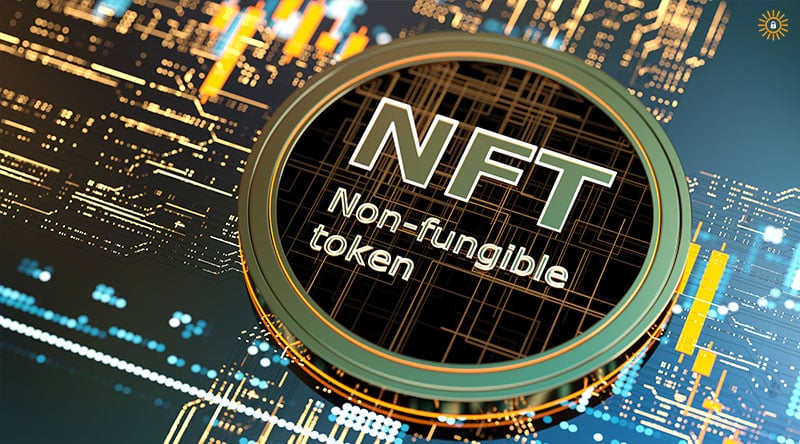- March 23, 2021
- Tags:

An emerging technology that is proving to be a game-changer in digital ownership is the Non-Fungible Tokens (NFT). Surprisingly enough, only a few people understand what this technology entails, and due to this unfamiliarity many organizations might miss-out on the potential benefits as it relates to data security and privacy.
In this article, we will describe what exactly is NFT, what does it entail, and how can the NFT technology be applied to enhancing corporate cybersecurity posture. Below are some of the data security challenges that NFT technology helps to resolve:
Data Confidentiality
Tokenization serves several purposes in Information Technology. For example, NFT uses tokens to represent the information contained in the digital assets. Tokenization allows the fractional ownership of digital goods, implying that several people can own parts of an asset. Tokenization also serves a greater purpose; it allows for an improved sense of confidentiality. Sensitive and confidential data are usually hidden, and tokens are used as substitutes. With NFT tokens being cryptographic, there is no chance that the underlying information can be seen by anyone other than the owner, as it helps to protect sensitive information
Data Integrity
A lot of people worry about how data may be altered in such a way that it becomes corrupted or useless. When it comes to assets, these changes may result in the loss of a right to certain claims. NFTs help to improve the integrity of data by leveraging Blockchain technology. Ethereum is the major Blockchain technology on which NFTs run.
One major strength of Blockchain is that the records stored in the chain are usually immutable, and once a record is made in the chain, there would never be a means of modification. Blockchain achieves this immutability by using cryptography and hashing. Blocks in the chain usually have a hash value that not only represents the block, but also the block preceding it.
Validation is another concept that is used in Blockchain. For any transaction to come into effect, it must be validated. Validation would only take place after certain conditions have been met, and failure to meet these conditions may result in a lack of validation for the transaction. Hence, it is hard to make changes without being noticed.
Data Availability
NFT is built on Blockchain, therefore, it makes the availability of data in several ways possible. In Blockchain, it is usually difficult for data in individual blocks to be lost due to the distributive nature of the database. Even if it was possible to alter the information contained in one block, there will be other blocks containing previous information thereby making it easy to retrieve the data from other chains serving as backups in the database. This makes it impossible to suffer a data loss.
Real-Time Benefits of NFT Technology
With NFTs offering a lot of security benefits, it has become a great way by which individuals store digital assets. This technology prevents some of the issues that are associated with ownership, storage, and transfer of digital assets, and retaining the value associated with private digital assets.
- Prevention of Fraud – With the information stored in the NFTs being hard to change, it is hard for other people to forge organizational assets. This helps to prevent the type of situation where an organization may lose the right to claim ownership of a digital asset. It also helps to prevent the creation of counterfeits as there can only be one unique copy.
- Right to ownership – Without NFTs, it may be difficult to claim the ownership of a digital asset as there is no information that links someone to them. However, tokenization allows the organization of personal or corporate information to a digital asset, thereby allowing an entity to claim ownership of its asset.
- Creation of value – With an entity having exclusive rights to an asset, it may derive value from the ownership as no other entity would be able to use the asset without the permission of the owner. Therefore, an organization may demand loyalties from the usage of its asset, or exchange the asset for a given monetary amount. NFT technology is proving to be disruptive, not only in the asset ownership and management space, but also in information security.
Conclusion
To assure the security and privacy of digital assets, NFTs are encoded with software codes that help to verify the true owner(s) of sensitive data, thus making data management tasks more transparent and transferable. At its core, NFT technology is a special crypto asset that can be leveraged within the cybersecurity space to improve the security and privacy of digital assets. Therefore, the protection of digital assets using NFT technology creates a unique and original tag for pieces of data attributes that can be used to track and trace the transfer, storage, and integrity of sensitive information.
Small to midsize businesses (SMBs) can certainly utilize the benefits of NFT technology to maintain the confidentiality and integrity of the data produced throughout their businesses. To determine whether your business is properly positioned to benefit from security attributes of NFT technology, it is imperative to consult with competent cybersecurity experts who are capable of providing a unique value offering that is compatible with your business goals.








